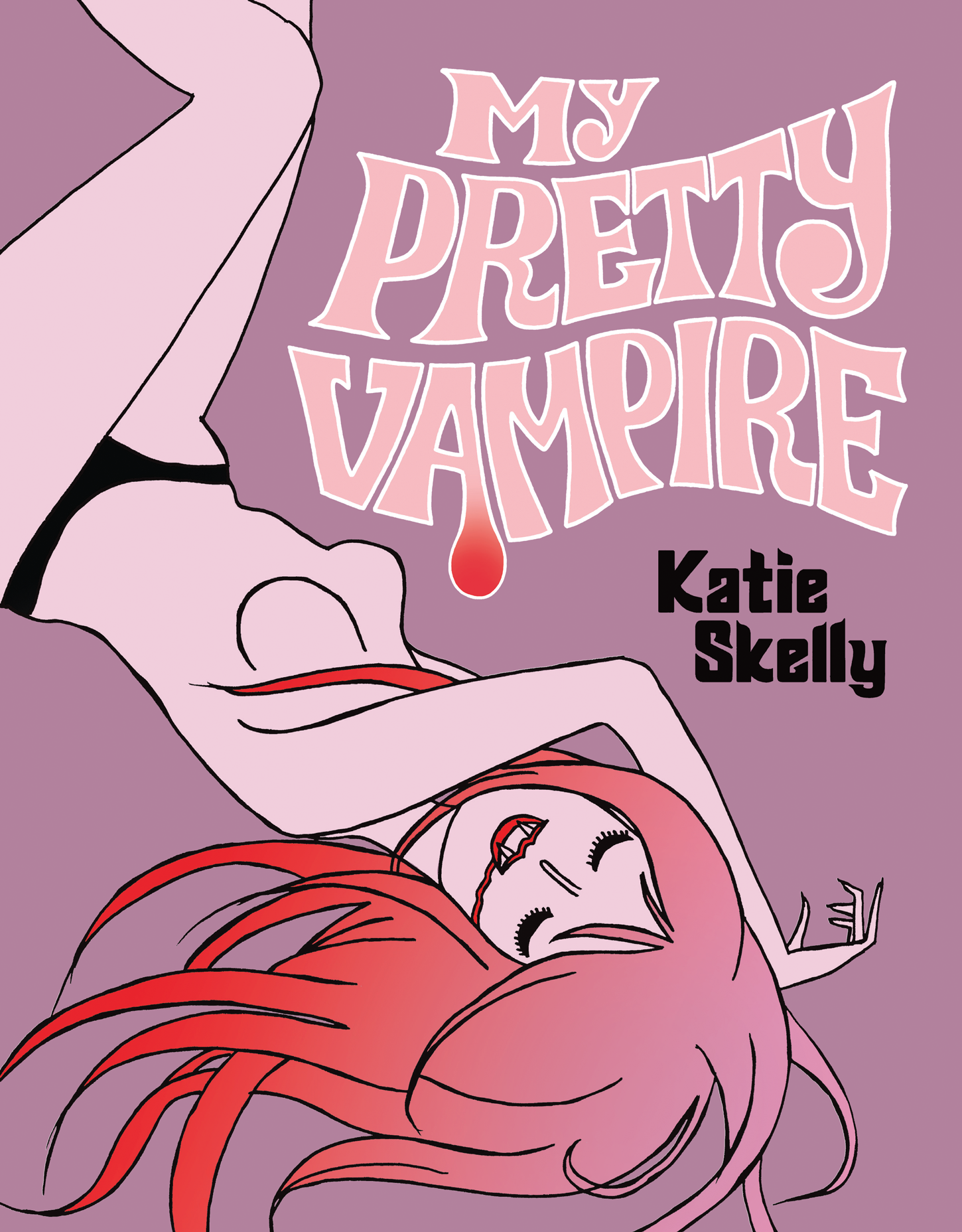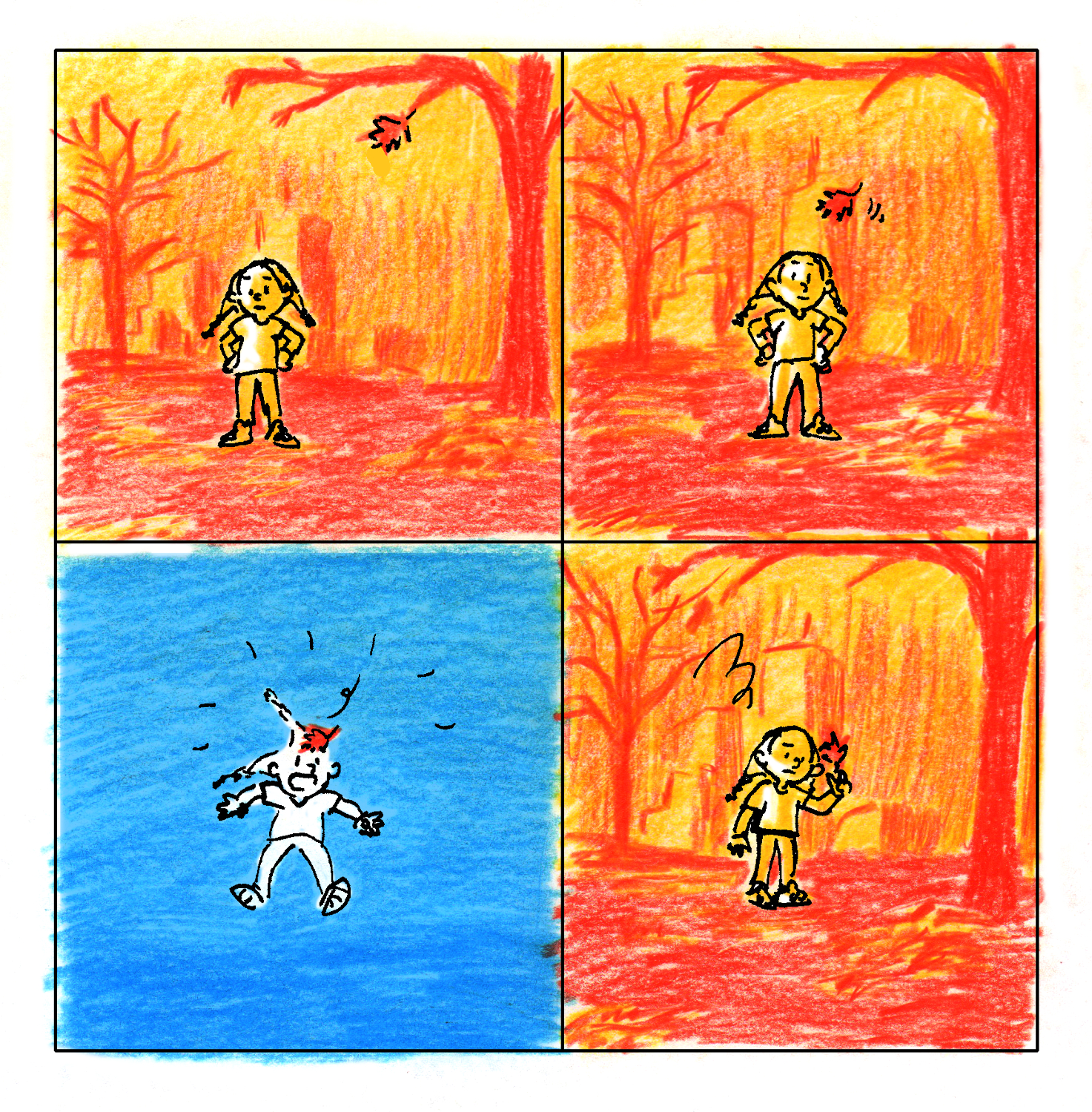Sam Ombiri on Katie Skelly’s My Pretty Vampire, Sally with comics and news from Sheena Howard and Barbara Brandon-Croft, and more!
—————————————————————————————————
Sam Ombiri here: When I first saw My Pretty Vampire as a book I was surprised by how much bigger it was than what I had imagined it to be. Then I was even more surprised that Katie Skelly’s drawings were in color, and the color looked especially good at this size. At first I didn’t have much interest in buying it as a hardbound book – like something in the back of mind was more excited to read her work as mini comics. Nurse Nurse was exciting because of how low key it was as a mini comic and how amazing it was to read. At the back of my mind I thought I really preferred to read Skelly’s work as a mini comic, but My Pretty Vampire put those reservations away. The color not only looked fantastic, but also served as a new tool, which Skelly used to better convey certain feelings or sensations that the characters have.
In the beginning of the book for example, the main character, Clover (a vampire), after a fantastic nightmarish dream sequence, is given blood to drink. She is so focused on the blood that her robe changes color, and the whole room changes color. This was maybe a design choice because the blood is black, and Clover’s robe was black, but if that’s the case than it serves the two functions. I’m sure Katie was aware of this, as the whole room turns black in the service of Clover’s dread. Then, as Clover drinks the blood, Katie employs an effect that conveys satisfaction, and then a clear interruption of satisfaction, as her feeling changes to disgust. It communicates that for Clover, drinking blood is almost rather aesthetically driven. She later says she’s starving, and what it is that she’s starving for we see in the chapters that follow.
There’s also the suggestion that Marcel, Clover’s brother, has, at the very least, an incestuous lust for Clover, or something to that effect. It’s even conveyed with the accusatory, albeit ambiguous looks and apathetic, condescending, sarcastic voice of the housemaid. The housemaid is a great addition to the story, as she’s very sympathetic to Clover. This tells me as the reader that Clover is having a miserable time, without Skelly manipulating me as the reader with pure shock. As a result I sympathize with her more than I would’ve if she went the other route.
Maybe Clover could bear to drink oxblood, which disgusts her, if there weren’t so many other unbearable things she had to deal with. These unbearable things are only implied, masterfully, by Skelly, using such a small amount of exposition – instead she conveys a feeling left up to interpretation. There’s a page where Clover is looking at her invisible mirror, as if to say “I can’t even see where I was bit.” We only get hints of her suffering. When Clover is crying, it’s not the crying that gets to me. What gets to me is how, when she refers to her torment, it’s rather unspecific both as to the quality, and circumstance. – Sam Ombiri
Get a copy of My Pretty Vampire (Fantagraphics, 2017) HERE.
—————————————————————————————————
Sally here – there’s an interview with Sheena Howard on Vice that is worth wading into. Sheena is the first black woman to win an Eisner Award for her book Black Comics: Politics of Race and Representation. She is also the creator of the Encyclopedia of Black Comics, which came out this year. She sat down with Noel Ransom to discuss that book, comics academia, and black women in comics.
“Going back to blackness in comics. One of the things that surprised me was how much shit I just don’t know, and how few resources there are out there in educating me.
A lot of those things surprised me too. I mean, I knew that there were black women in the comic industry that weren’t getting any chances to write monthly comic book strips with publishers, and you can tell in my Encyclopedia that I made a concerted effort to include women, even if they just self published things, and that was important to me. Some people were even mad about that because for every spot that’s taken up in the book, that’s one spot where people didn’t get into this first volume. You’ll hear people say, “oh there aren’t many black women writers that can write monthly series for publishers.” What I’m trying to say is that simply isn’t true, and here there they are. A lot of them have their own social media followings, and have self published comic book content and are doing really well but just need a chance to get into a more consistent monthly series with a publisher.And I also thought it was really crazy that there hasn’t been a black female writer for Marvel until 2017. [laughs] That is really, really crazy.“
Read the whole interview HERE.
—————————————————————————————————
I wrote about Brumsic Brandon Jr. and his Luther strip a few weeks ago, but I neglected to mention his daughter, Barbara Brandon-Croft, who was a syndicated cartoonist in her own right and was in fact one of the first black female syndicated cartoonists – and part of one of the only instances of a father/daughter cartoonist relationship…! Here’s one of her strips, from Where I’m Coming From, which ran from 1991-2005 in numerous papers across the US (making her the first nationally syndicated black female cartoonist):
Here’s a bit more about her from the CBLDF.
—————————————————————————————————
Connor Willumsen says ‘Cartooning is a lot like magic’ in this video, directed by Fatine-Violette Sabiri. It offers a glimpse into his head space and a look at his new comic, Anti-Gone (Koyama Press, 2017).
Brian Nicholson reviews Anti-Gone, calling it the “book of the year”. He also says:
“Let’s begin with the title: Stating an opposite of “gone” implies presence. “Here” is already claimed by Richard McGuire. That book riffs on place while Anti-Gone is more about presence of mind, as held by its characters, who rove about a vast dreamscape of a world. Partially, it’s about the struggle to take in the world around you as the world around you, without say, immediately spitting up references to movies. It’s a struggle to see the world without mediating it through your memories of other mediated experiences. This struggle gets spoken of explicitly through dialogue. At a formal level, the book is all about commanding your attention, and holding it firmly, as you experience it without knowing where it’s going.“
Get a copy of Anti-Gone, along with two zines – a 20 page bootleg, and a special collage zine – as well as a unique Anti-Gone drawing, as part of the exclusive Connor Willumsen bundle from Comics Workbook – available HERE.
—————————————————————————————————
Suzy and Cecil – 10-19-2017 – by Gabriella Tito
—————————————————————————————————





